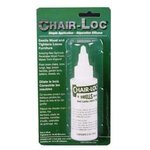- Messages
- 7,000
- Reactions
- 9,862
So I have grandpas old axe. It's not ancient, but maybe 30-40 years old. The handle got weak so I cut it off. Let me say this. Getting the wood and wedges out of the hole SUCKED. Took about an hour of work.
So I've heard placing the new handle in the head, and let sit in water, or linseed oil. But I get confused there. Does the whole axe need to submerged to be able to treat the all of the wood?
In time, I'd like that Stihl Axe. It's wrapped with metal below the head. That way, you don't hammer that area. Like I do!
Thoughts?
So I've heard placing the new handle in the head, and let sit in water, or linseed oil. But I get confused there. Does the whole axe need to submerged to be able to treat the all of the wood?
In time, I'd like that Stihl Axe. It's wrapped with metal below the head. That way, you don't hammer that area. Like I do!
Thoughts?












